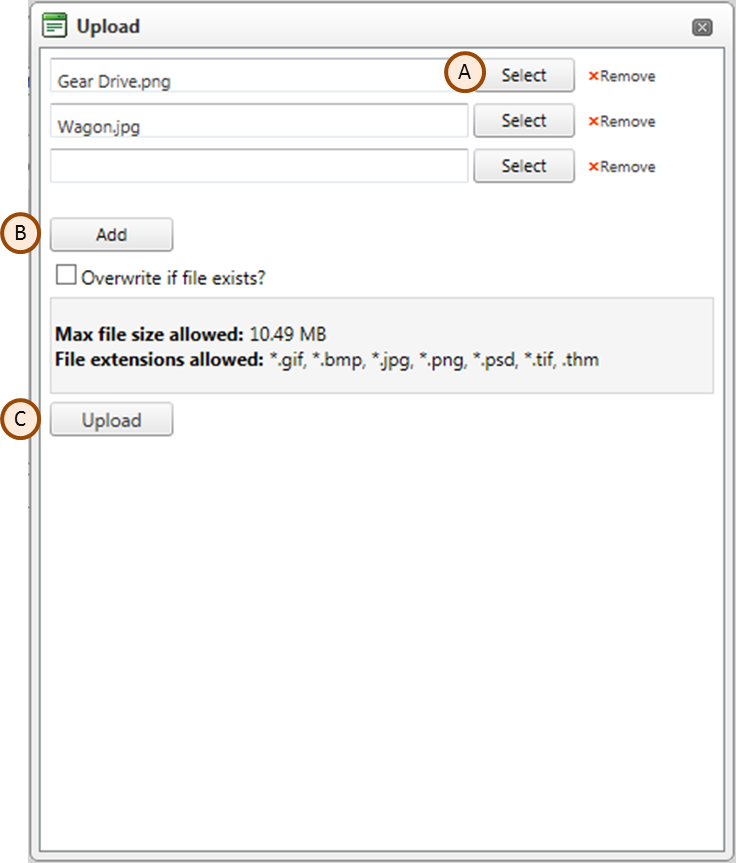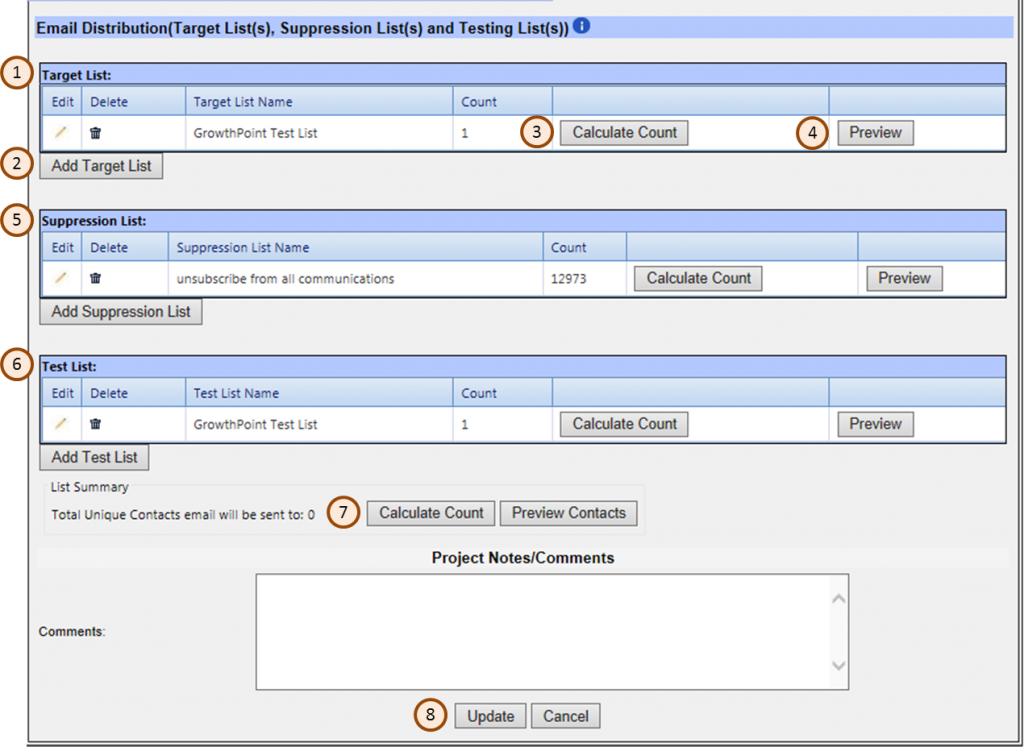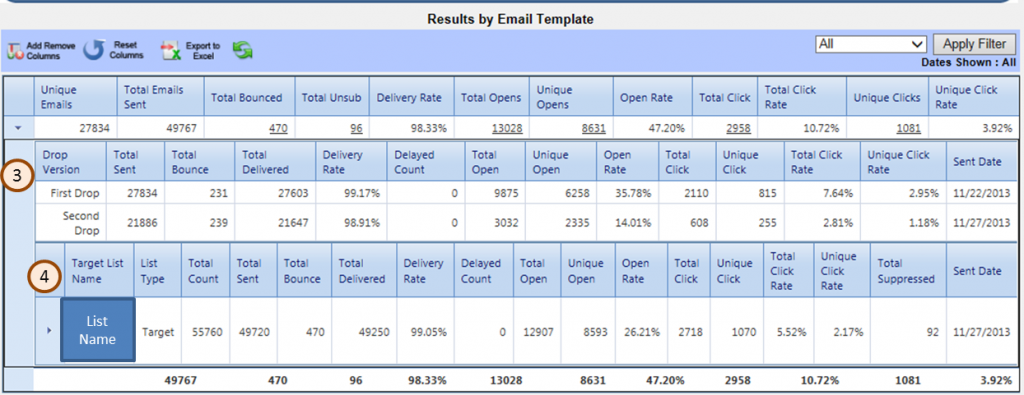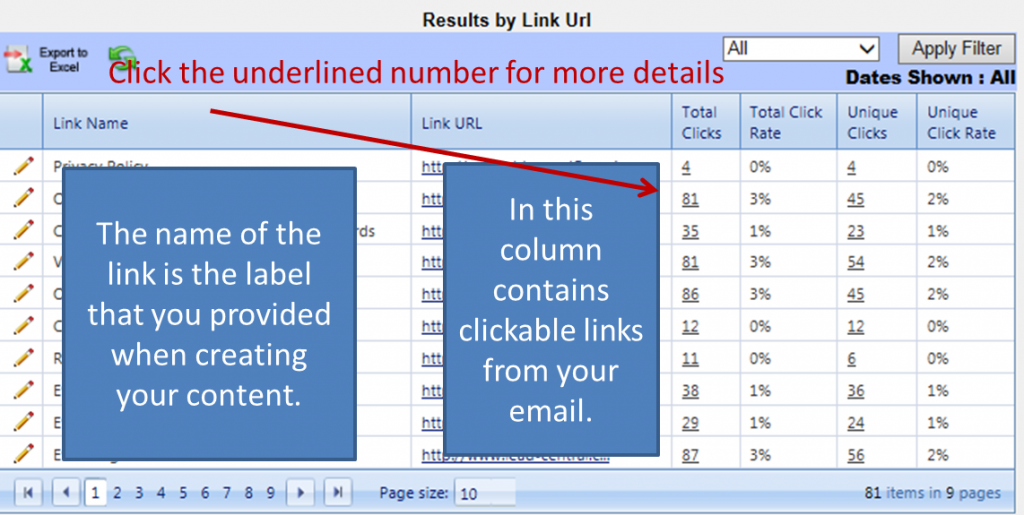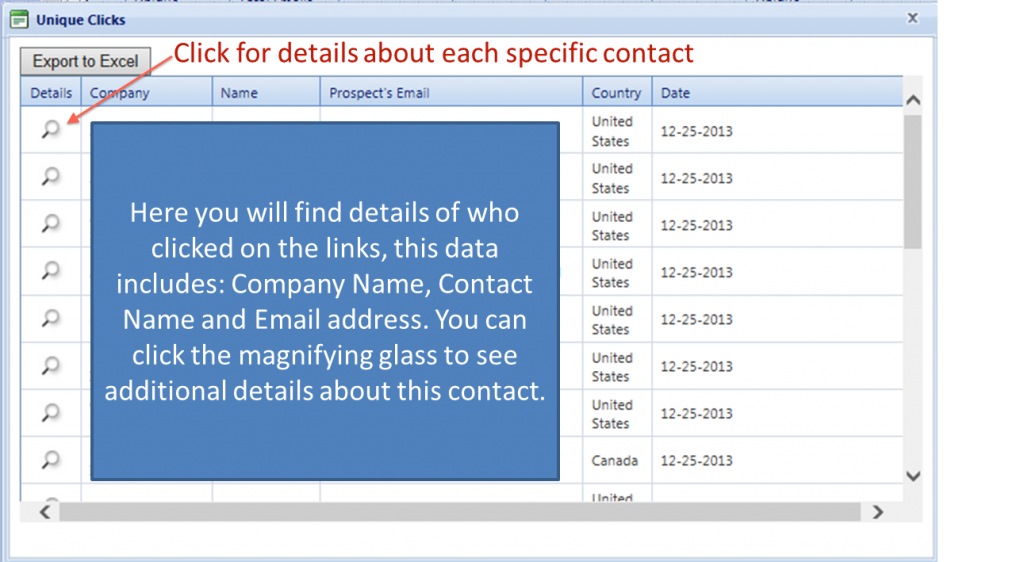Open the Marketing Resource Center (MRC) to see a listing of Campaigns. Right-click on the campaign name you want to add the new project to, then select Add Project from the popup. A new blank project form will open in the Project Summary tab on the right side of your screen.
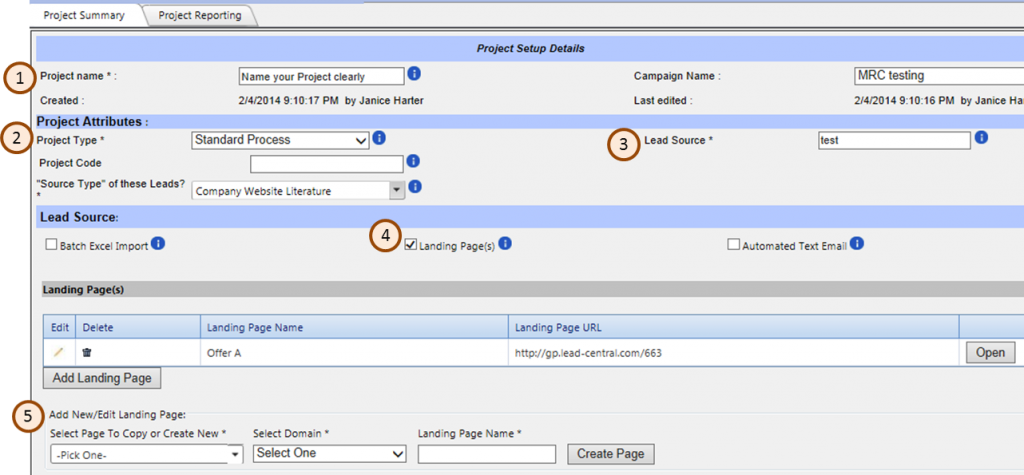
The first thing you want to do is fill out the (1) Project Name. Use naming standards that your company has set up so it is easy to find project. A typical naming standard is [vendor]/[media tactic]/ [start date], for example EPE/Webinar/March 2014.
Next to the Project Name is the Campaign Name, which is automatically filled in for you. If necessary, you can move the project to a different campaign by opening the project, then selecting a new Campaign Name using the dropdown in the Project Setup Details section.
Enter Project attributes
Under Project Attributes you have three options for (2) Project Type: Standard Process, Custom Process and Send Batch Email. For this example, we chose the Standard Process.
- Standard Process: This process is used when you want to create a project that won’t need any special rules for handling the responses. The standard rules can be utilized to grade, assign the leads and send out specific communications after a lead is generated.
- Custom Process: This process is used when special handling of the leads is necessary. The leads will follow the rules for Grading and Assigning however the communications that are sent out following the lead entering the process are customized. The grading and assignment rules can also be modified using the process.
- Send Batch Email: This process sends emails to a target list, no leads are entered into the project.
Additional options that need to be included on the Project Attributes include:
-
Project Code is used for specialized lead handling, leave this field blank. If specialized rules are needed, call GrowthPoint to discuss if you need special lead handling and we can help determine how to accomplish your goals.
-
In the Division drop down choose the appropriate division for which the leads are intended. This selection is used for reporting purposes and is unique per client, it is possible that you will not see this field.
-
In the Source Type of these Leads? dropdown choose an option. This is the marketing tactic for the lead, there is a drop down to select from, you can also add to the list if there is a source type missing. However it is important to keep the list concise.
-
Enter the (5) Lead Source – the lead source is seen by the sales person and is utilized to track the lead. The source can be the same as the project name but does not have to be. The Lead Source might be common between several projects if you want to group them together. A case where this may be used is a set of events.
Select Lead Source
The Lead Source section indicates how the lead are being generated. Leads can be entered from an excel spreadsheet, via a LeadCentral Landing Page(s) or from a text email or from more than one Source. Description of Lead Sources:
- Batch Excel Import: When the leads are being entered from an excel file for tactics like a tradeshow this box is checked.
- Landing Page(s): When leads are entered via a LeadCentral Landing page this option is selected. More information about setting up a landing page can be found here.
- Automated text email: This option is used to collect leads by integrating with other systems or websites, if you need more detail or want to explore this option contact GrowthPoint.
In this example we are entering leads via a (4) Landing Page, check the box next to that item. When this is selected the screen changes and an Add Landing Page button appears.
Click the Add Landing Page Button, in the (5) Add New/Edit Landing Page section that appears after you do this, Select a Page to copy from the Select Page To Copy or Create New dropdown. Scroll down to Master Templates and Misc., click the plus by project entitled Current Branded Landing page Templates. Choose the desired landing page to copy. There is an overview of the available pages and their purposes in the Tools menu of your systems, under Template Examples.
You can choose to add a blank page and utilize a Wireframe to create the page. Wireframes are template that give you the look and feel of the page desired and with the editable sections being text and photos so that you know the functionality of your page will work, the layout will work good, and all you have to worry about is getting your message right. To get more details on how to use a landing page wireframe click here.
Choosing from this list will allow you to copy a page that is in brand compliance, has the appropriate fields contained and has been tested to ensure it looks good in a wide variety of browsers. After you have chosen a page to copy, select a domain from the drop down and name your landing page. Select a name for your page that is clear and concise, note that the viewer can see the page name you entered in the tab on their browser. When you are done entering this information click Create Page.
If you want to test several landing pages on your project you will need to set up an A/B test which will allow 2 or more pages to be tested against each other. For more detail on how to set up an A/B test click here.
Select how leads will be assigned
In the Lead Distribution section select from the drop down to indicate who should receive the leads. All leads are assigned even if they are not sent to sales. Choose default unless you know another option is appropriate.
Select lead grading method
In the Lead Qualification section choose a grade as a default for the project. Filter rules can override the grade selected here. A grade coming in part of the lead from the file or a landing page will override the default grade set at the project level.
The Telesales Required field is check if leads are going to be assigned to telesales, to use this option talk to GrowthPoint.
Customer Communications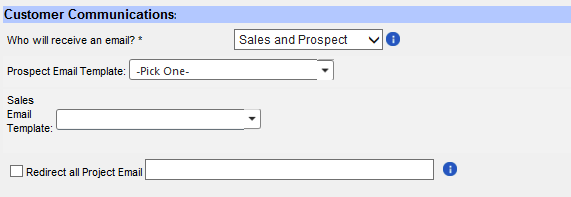
In the Customer Communications section you have the option to choose who will receive emails when the lead is entered into the system. The email to the sales notifies the sales person that they have a lead to follow up on gives them details Once the lead is in the system it is important to send a communication to the prospect to thank them for their interest, further engage the prospect with additional offers and provide them with the name of their sales person.
- Sales and Prospect: Both the prospect and Sales person will receive an email message when the lead is entered. It is always good to email the Prospect to engage them further. The Sales persons needs to be notified when they are assigned a new lead for follow-up. Only leads that are graded Hot or warm will be sent to the sales person even if this option is selected.
- Sales Only: An email is sent to the sales person when the lead is entered in the system, emails to sales are only sent if the lead is Hot or Warm. If this option is selected and the lead grade is not Hot or Warm no email will be sent. This option is used when you don’t want to send the prospect an email, maybe they have previously received one, or the leads are old and you want Sales to follow-up but not notify the prospect because of the delay.
- Prospect Only: An email is sent to the prospect but not to the sales person. This is an good option for an event registration
- None: No emails are sent out.
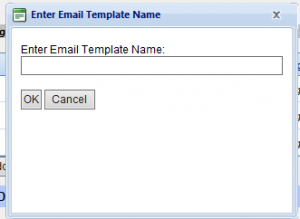 After you have selected who will receive an email additional boxes will appear to select the email templates you want to use based on who should receive an email. For the Prospect email option select the Blank Template in the Prospect Email Template from the dropdown. This will give you a blank slate for entering content. After you have selected a template you will have the option to name your email template. When you are done click OK. Later you will have an option to select a wireframe and enter the data for your email. If you wanted to copy a previously created email select the desired template from the Campaign/Project listing found in the drop down.
After you have selected who will receive an email additional boxes will appear to select the email templates you want to use based on who should receive an email. For the Prospect email option select the Blank Template in the Prospect Email Template from the dropdown. This will give you a blank slate for entering content. After you have selected a template you will have the option to name your email template. When you are done click OK. Later you will have an option to select a wireframe and enter the data for your email. If you wanted to copy a previously created email select the desired template from the Campaign/Project listing found in the drop down.
For the Sales Email template dropdown choose the default sales template.
The Redirect all Project Email box in the Customer Communication section is used when testing a project. If you check the option and enter an email address all the projects emails will be sent to this address. This will be discussed further in the testing section.
Project Goals
The Project Goals section is optional if the data is entered, it can used when completing reporting on the project. Notes and comments can be entered in the box at the bottom of the form, these notes can only be seen when inside the MRC.
When you are done making changes click update. After you have clicked update you will see your new project listed on the left side of the screen with the email templates you indicated.
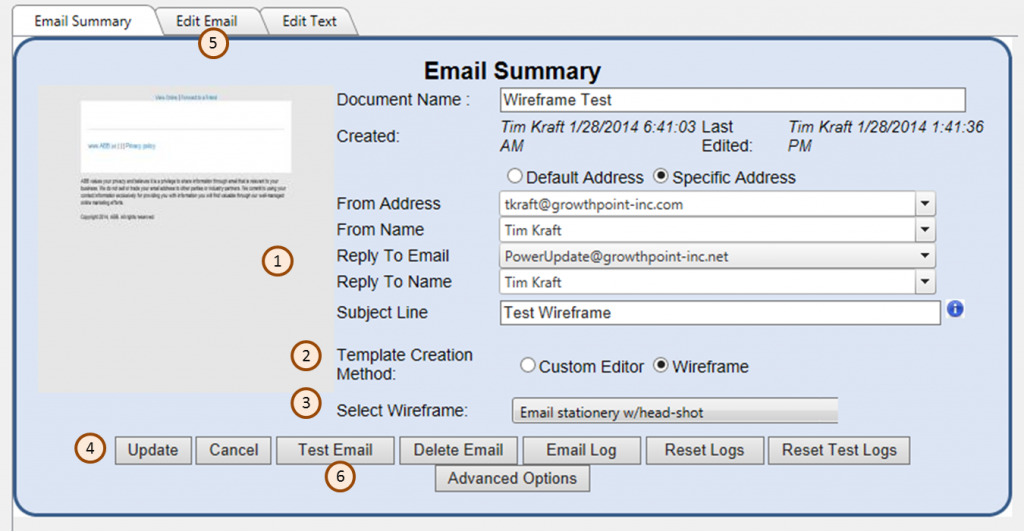
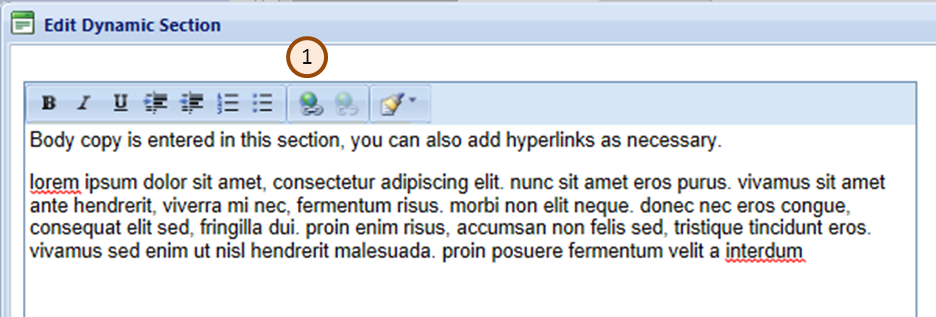
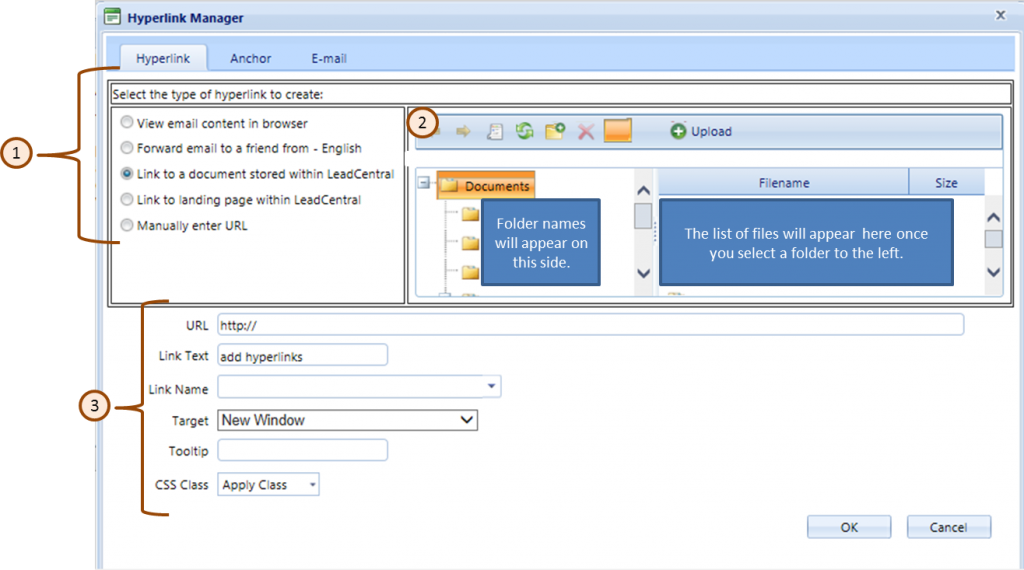
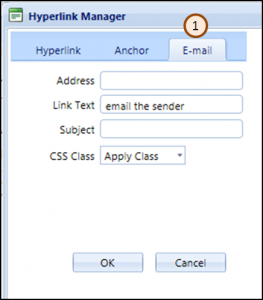



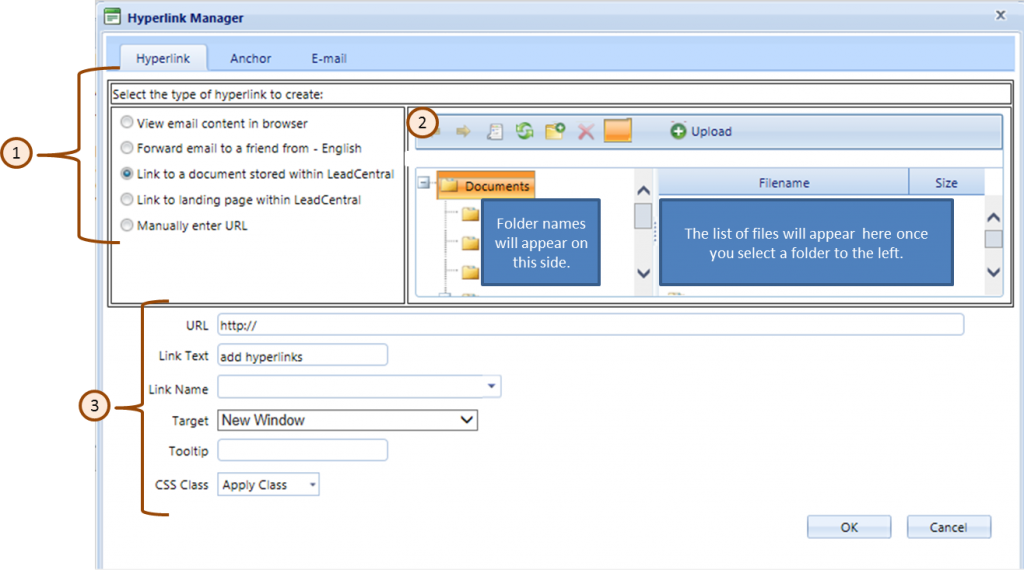
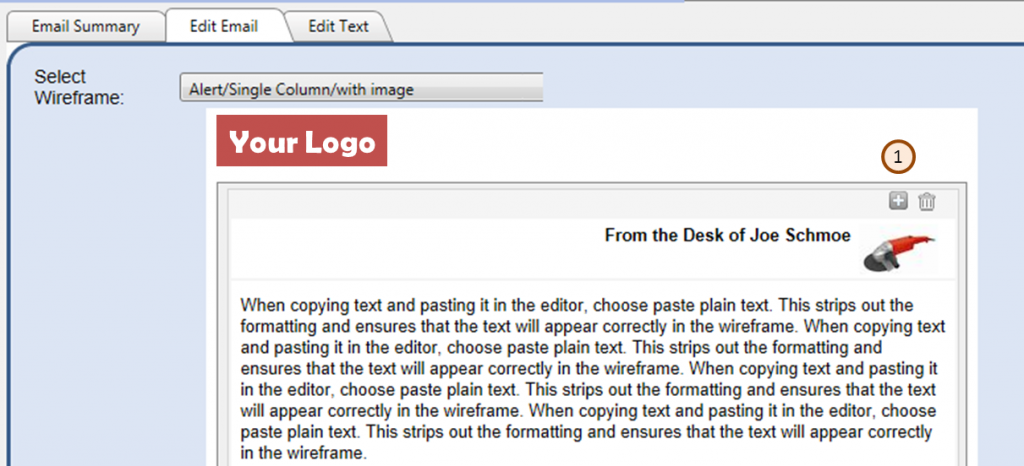
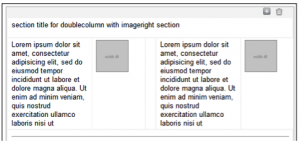 ick the Trash Can at the top of the window to delete the repeated section.
ick the Trash Can at the top of the window to delete the repeated section.
